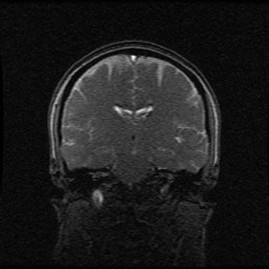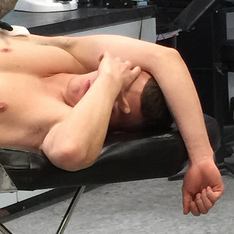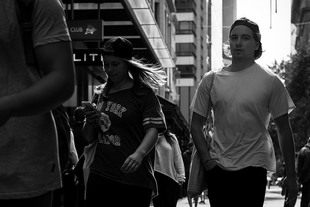- Home
- About Us
- TSPT Academy
- Online Courses
-
Resources
- Newsletter
- Business Minded Sports Physio Podcast
- Day in the Life of a Sports PT
- Residency Corner
-
Special Tests
>
-
Cervical Spine
>
- Alar Ligament Test
- Bakody's Sign
- Cervical Distraction Test
- Cervical Rotation Lateral Flexion Test
- Craniocervical Flexion Test (CCFT)
- Deep Neck Flexor Endurance Test
- Posterior-Anterior Segmental Mobility
- Segmental Mobility
- Sharp-Purser Test
- Spurling's Maneuver
- Transverse Ligament Test
- ULNT - Median
- ULNT - Radial
- ULNT - Ulnar
- Vertebral Artery Test
- Thoracic Spine >
-
Lumbar Spine/Sacroiliac Joint
>
- Active Sit-Up Test
- Alternate Gillet Test
- Crossed Straight Leg Raise Test
- Extensor Endurance Test
- FABER Test
- Fortin's Sign
- Gaenslen Test
- Gillet Test
- Gower's Sign
- Lumbar Quadrant Test
- POSH Test
- Posteroanterior Mobility
- Prone Knee Bend Test
- Prone Instability Test
- Resisted Abduction Test
- Sacral Clearing Test
- Seated Forward Flexion Test
- SIJ Compression/Distraction Test
- Slump Test
- Sphinx Test
- Spine Rotators & Multifidus Test
- Squish Test
- Standing Forward Flexion Test
- Straight Leg Raise Test
- Supine to Long Sit Test
-
Shoulder
>
- Active Compression Test
- Anterior Apprehension
- Biceps Load Test II
- Drop Arm Sign
- External Rotation Lag Sign
- Hawkins-Kennedy Impingement Sign
- Horizontal Adduction Test
- Internal Rotation Lag Sign
- Jobe Test
- Ludington's Test
- Neer Test
- Painful Arc Sign
- Pronated Load Test
- Resisted Supination External Rotation Test
- Speed's Test
- Posterior Apprehension
- Sulcus Sign
- Thoracic Outlet Tests >
- Yergason's Test
- Elbow >
- Wrist/Hand >
- Hip >
- Knee >
- Foot/Ankle >
-
Cervical Spine
>
- I want Financial Freedom
- I want Professional Growth
- I want Clinical Mastery
|
Having recently completed reading Therapeutic Neuroscience Education, I have started to realize just how powerful the mind can be with our patients. With the development of modern pain science, this may indicate a need to increase our scrutiny when assessing the validity and quality of research as it becomes published. The old biomechanical model, while still relevant, is not the leading foundation we once thought it was. For those of you not familiar with some of the recent developments in pain research, we’ll do a little review. All pain comes from the brain. No matter what the “injury” is, the pain is coming from the brain. When a threat is detected in the body, signals are sent to the brain. Depending on the level of importance, you may or may not perceive pain. This is important to recognize, because of everything that is happening in and controlled by the brain. Emotions, bodily functions, respiratory rate, control of blood flow, muscle contraction, etc., it all is controlled by the brain. This is important to understand, because the functions of one area can influence another. For example, have you ever noticed a patient’s pain was worse when they are having a bad day or depressed? The emotional aspects of the brain, when stimulated in certain ways, can make it easier for your patient to “feel pain,” simply from raising the threat level. Couple that with the lack of correlation between imaging findings and pain. Things like herniated discs, meniscal tears, bone spurs, spinal stenosis, osteoarthritis, RTC tears, etc. are just normal wear and tear. These are found in many asymptomatic individuals. Another example includes the biopsychosocial approach. I’m sure you’ve had patients who claim “the one thing that works for me is ultrasound.” What much of the research has shown is that there is rarely any benefit to including ultrasound in treatment. But in those patients who swear by it, you may notice an improvement in their symptoms. How could this be? Is it possible the patient was convinced that they would get better, so the brain allowed the threat level to be lowered? I bring this up because of the impact a placebo can have. Studies have shown no difference between sham US and therapeutic US. No difference has been found between partial meniscectomy and sham surgery. No patient subjective reports were significantly different between those who had a successful RTC repair and those who had a re-tear. With our understanding of modern pain science, there are several ways we can interpret in these findings. One is the possibility again for the mind’s contribution. It’s possible that with the various sham treatments that because the patient thought they were getting treated, they actually felt better. Building off of this, is a placebo the same as no treatment? It doesn’t appear so. A patient’s beliefs can have significant impact on the results of an intervention, which is why it is imperative that we consider our patient’s preference in our treatment plan. This can lead us down a path with potentially difficult decisions to make. Even though the biomechanical approach is not as significant as we once thought, should we revert back to that model in patients that are fixated on the theory? If we were to jump to an explanation of pain science right away, the patient may shut down completely to any further treatment consideration. With the impact we know the mind can have, this would be one of the worst things we could do as the patient would not even allow themselves to get better. Likely there is a middle ground to be found. A slow introduction of pain science, while touching on the patient’s existing beliefs, may help to build the trust needed to allow healing to occur. This should be considered in both the clinical and research article appraisals. -Chris References:
Like this post? For more advanced information, join the Insider Access Page now! Also, check out similar previous posts below:
1 Comment
Aaron
7/12/2015 01:53:17 am
Great post and agree with your points, especially that educating the patient about their pain is a delicate issue and one that needs to be proceeded with caution. I think as more PTs begin to learn about pain science, it will be a challenge to provide treatments and education in ways that do not discredit the patient's current belief system. Pain science is much more of an abstract concept than the biomechanical model and may be difficult for therapists to explain and patients to understand.
Reply
Leave a Reply. |
Dr. Brian Schwabe's NEW Book in partner with PaleoHacks!
Learn residency-level content on our
Insider Access pages We value quality PT education & CEU's. Click the MedBridge logo below for TSPT savings!Archives
July 2019
Categories
All
|









 RSS Feed
RSS Feed